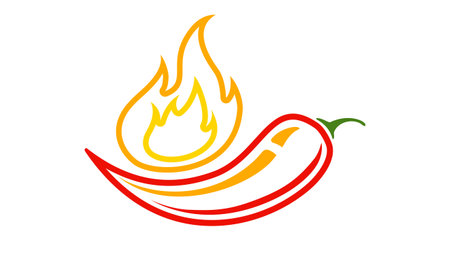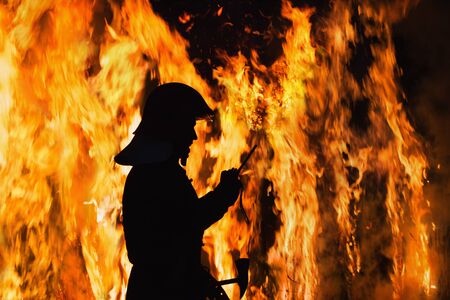1. Understanding Fire Pit Regulations by State and Municipality
Before setting up a fire pit in your backyard, its important to understand the regulations that apply to your specific location. Fire pit laws vary across states and municipalities, and failure to comply could result in fines or forced removal of your fire feature.
State and Local Differences in Fire Pit Laws
Each state has its own set of rules regarding fire pits, and local governments often add additional restrictions. Some states have relaxed regulations, while others impose strict guidelines on where and how you can use a fire pit. Additionally, counties and cities may have their own ordinances that dictate specific requirements.
Common Fire Pit Restrictions
Fire pit regulations typically focus on safety, environmental concerns, and community well-being. Here are some common restrictions you might encounter:
| Regulation Type | Description |
|---|---|
| Open Burning Restrictions | Some areas prohibit open flames unless they are enclosed or used for cooking purposes. |
| Distance from Structures | You may be required to place your fire pit a certain distance away from homes, fences, or other structures. |
| Bans During Dry Seasons | Certain states enforce seasonal bans due to wildfire risks, especially during dry months. |
| Pit Design Requirements | Your fire pit may need to be built with specific materials or include a spark screen for added safety. |
| Ash Disposal Guidelines | You might be required to dispose of ashes in designated areas to prevent environmental hazards. |
The Role of Environmental Considerations
Apart from safety regulations, many states implement laws to protect air quality and reduce pollution caused by open burning. Certain areas limit the types of wood that can be burned, prohibiting treated or painted wood due to toxic emissions. Some municipalities also require permits for recreational fires to track air quality impact.
Checking Your Local Laws
The best way to ensure compliance is by checking with your local government or fire department. Many city websites provide detailed guidelines on outdoor fire features, including whether permits are required. Additionally, homeowners associations (HOAs) may have their own rules that override city laws, so its always good to verify before installing a fire pit.
2. Permits and Approvals: What You Need Before Installing a Fire Pit
Before installing a fire pit, its important to ensure you have the proper permits and approvals. Regulations vary by state, county, and city, so checking with local authorities is the first step. Additionally, homeowners associations (HOAs) may have specific rules regarding fire pits. Below is a guide to help you navigate the process.
Understanding Local Permit Requirements
Many cities require a permit before installing a fire pit, especially if it is a permanent structure or uses gas. Here are some common factors that determine whether you need a permit:
| Requirement | Description |
|---|---|
| Pit Type | Permanent fire pits (built-in stone or brick) often require permits, while portable fire pits may not. |
| Fuel Type | Gas-powered fire pits may require additional inspections for safety compliance. |
| Location | Pits too close to structures or property lines may need special approval. |
| HOA Rules | If you live in an HOA community, additional restrictions may apply. |
The Permit Application Process
The application process typically involves submitting plans and paying a fee. Here’s what to expect:
- Check Local Codes: Visit your city or county website to find specific requirements for fire pits.
- Prepare Your Application: Some areas require drawings or specifications of your planned fire pit.
- Submit Documents: Provide necessary paperwork, including site plans if required.
- Schedu le an Inspection:If needed, an inspector may visit to ensure compliance with fire codes.
- Receive Approval: Once approved, follow all guidelines to maintain compliance.
The Importance of Fire Safety Compliance
Your local fire department may have additional regulations regarding open flames. These can include restrictions on burn bans during dry seasons or specific safety measures like spark screens or clearance distances from flammable materials.
Tips for Ensuring Compliance
- Select a Safe Location: Keep the fire pit at least 10 feet away from buildings and combustible materials.
- Avoid Prohibited Fuel Types: Some areas restrict burning wood due to air quality concerns.
- Follow HOA Guidelines:If your community has an HOA, check their regulations before installation.
- Kee p Extinguishing Tools Nearby:A hose, sand, or extinguisher should always be accessible when using the fire pit.
Final Check Before Installation
If youre unsure about any requirements, contact your local building department or fire marshal for clarification. Taking these steps will help you avoid fines and ensure your fire pit is safe and legal to use.

3. Homeowners Association (HOA) Rules on Fire Pits
If you live in a community governed by a homeowners association (HOA), there may be specific rules regarding fire pits. These regulations can impact whether you can install one, where it can be placed, and what type of fuel it can use. Understanding these rules before making any decisions can save you time and potential fines.
Common HOA Fire Pit Restrictions
HOAs enforce rules to maintain safety, property values, and neighborhood aesthetics. Here are some common restrictions you might encounter:
| Restriction Type | Details |
|---|---|
| Size Limitations | Some HOAs set maximum dimensions for fire pits to ensure they do not pose safety hazards. |
| Location Requirements | You may need to place your fire pit a certain distance from structures, fences, or property lines. |
| Fuel Type Restrictions | Certain communities only allow gas-powered fire pits, prohibiting wood-burning models due to smoke concerns. |
| Operational Hours | Your HOA may restrict the times when you can use your fire pit to avoid disturbing neighbors. |
| Aesthetic Guidelines | The design and materials of your fire pit may need to match community standards. |
How to Check Your HOAs Fire Pit Rules
If youre considering adding a fire pit, follow these steps to ensure compliance with your HOAs regulations:
- Review HOA Documents: Check your communitys Covenants, Conditions & Restrictions (CC&Rs) for fire pit guidelines.
- Contact the HOA Board: If youre unsure about specific rules, reach out to the HOA board or management company.
- Submit an Approval Request: Some HOAs require homeowners to get written approval before installing a fire pit.
- Talk to Neighbors: Your neighbors may already have experience dealing with HOA rules on fire pits and can offer advice.
- Stay Updated on Rule Changes: HOAs occasionally update their guidelines, so check for any recent changes before proceeding.
Troubleshooting HOA Restrictions
If your HOA has strict restrictions on fire pits, consider alternative solutions like:
- Portable Fire Pits: Some HOAs allow portable models that can be stored when not in use.
- Electric Fire Features: Electric fireplaces or heaters provide warmth without violating fuel restrictions.
- Built-in Gas Fire Pits: If wood-burning is prohibited, a built-in gas option might still be allowed.
Navigating HOA rules can feel overwhelming, but understanding them upfront will help ensure your fire pit installation goes smoothly. Always check with your association before making any purchases or modifications to avoid potential fines or removal orders.
4. Safety Guidelines and Compliance with Fire Codes
Ensuring your fire pit is safe and complies with local fire codes is essential for preventing accidents and avoiding fines. Below are key safety measures to follow, covering clearance requirements, suitable materials, and proper operation guidelines.
Clearance Requirements
Fire pits must be positioned at a safe distance from structures and flammable materials. Many local fire codes provide specific clearance rules, so it’s important to check with your municipality. Below are general guidelines:
| Requirement | Recommended Distance |
|---|---|
| Distance from buildings | At least 10-25 feet |
| Distance from trees or overhanging branches | A minimum of 10 feet |
| Distance from fences or combustible structures | A minimum of 10 feet |
| Clearance above the fire pit | No low-hanging branches or roof extensions nearby |
Selecting Proper Materials
The materials used for your fire pit should be non-combustible and able to withstand high temperatures. Here are some recommended options:
- Paving Stones or Bricks: Heat-resistant and ideal for building a solid fire pit structure.
- Steel or Cast Iron: Durable metal options that hold up well under intense heat.
- Lava Rocks or Fire Glass: Safe materials for lining the bottom of the fire pit to improve heat distribution.
- Avoid Regular Rocks: Some natural stones can trap moisture and explode when heated.
Safe Operation Guidelines
A properly maintained fire pit reduces risks and ensures enjoyable outdoor gatherings. Follow these best practices:
Starting and Maintaining the Fire
- Use Dry, Seasoned Wood: Avoid wet wood or treated lumber, which can release harmful fumes.
- Avoid Accelerants: Never use gasoline or lighter fluid to ignite a fire.
- Create a Controlled Flame: Keep flames at a manageable height (typically under 3 feet).
- Keeps Extinguishing Tools Nearby: Have a bucket of water, sand, or a fire extinguisher within reach.
Supervision and Extinguishing
- Nobody Left Unattended: Always monitor the fire while it’s burning.
- Douse Completely Before Leaving: Pour water over embers and stir until cool before walking away.
- Avoid Windy Conditions: Strong winds can spread embers; always check weather conditions before lighting a fire.
By following these essential safety guidelines, you’ll not only comply with local fire codes but also create a safer environment for enjoying your outdoor space.
5. Potential Consequences of Non-Compliance
Failing to follow local fire pit regulations can lead to serious consequences. Homeowners may face fines, legal actions, or even be required to remove their fire pits entirely. Understanding the potential penalties and how to handle violations is essential to avoiding costly mistakes.
Possible Penalties and Fines
Depending on your location, non-compliance with fire pit laws can result in different penalties. Here’s a general breakdown:
| Violation Type | Potential Consequences |
|---|---|
| No Permit for Fire Pit | Fines ranging from $100 to $500; requirement to obtain a permit retroactively |
| Violating HOA Rules | Fines imposed by HOA; possible removal of the fire pit |
| Breach of Local Fire Codes | Civil penalties; forced removal of the fire pit; increased insurance premiums |
| Causing Property Damage | Potential lawsuits; liability for repairs and damages |
| Ignoring Burn Bans | Misdemeanor charges; fines up to $1,000 |
Legal Consequences
If a fire pit violation leads to property damage or injury, homeowners could be held legally responsible. In some cases, this might involve civil lawsuits or criminal charges if negligence is proven. Insurance companies may also deny claims if they determine the fire pit was not compliant with local regulations.
How to Address Violations
If you receive a notice of violation, take these steps immediately:
1. Review the Notice Carefully
The first step is understanding why you are being cited. Check the specific regulation you allegedly violated.
2. Contact the Relevant Authority
If its a city ordinance issue, reach out to your local fire department or building code office. If its an HOA-related violation, speak with your HOA board.
3. Take Corrective Action
This may involve applying for permits, modifying your fire pit setup, or removing it altogether.
4. Appeal if Necessary
If you believe the violation was issued in error, most municipalities and HOAs have an appeal process that allows you to contest the citation.
5. Prevent Future Issues
The best way to avoid future problems is by staying informed about fire pit rules in your area and ensuring compliance before installing one.


